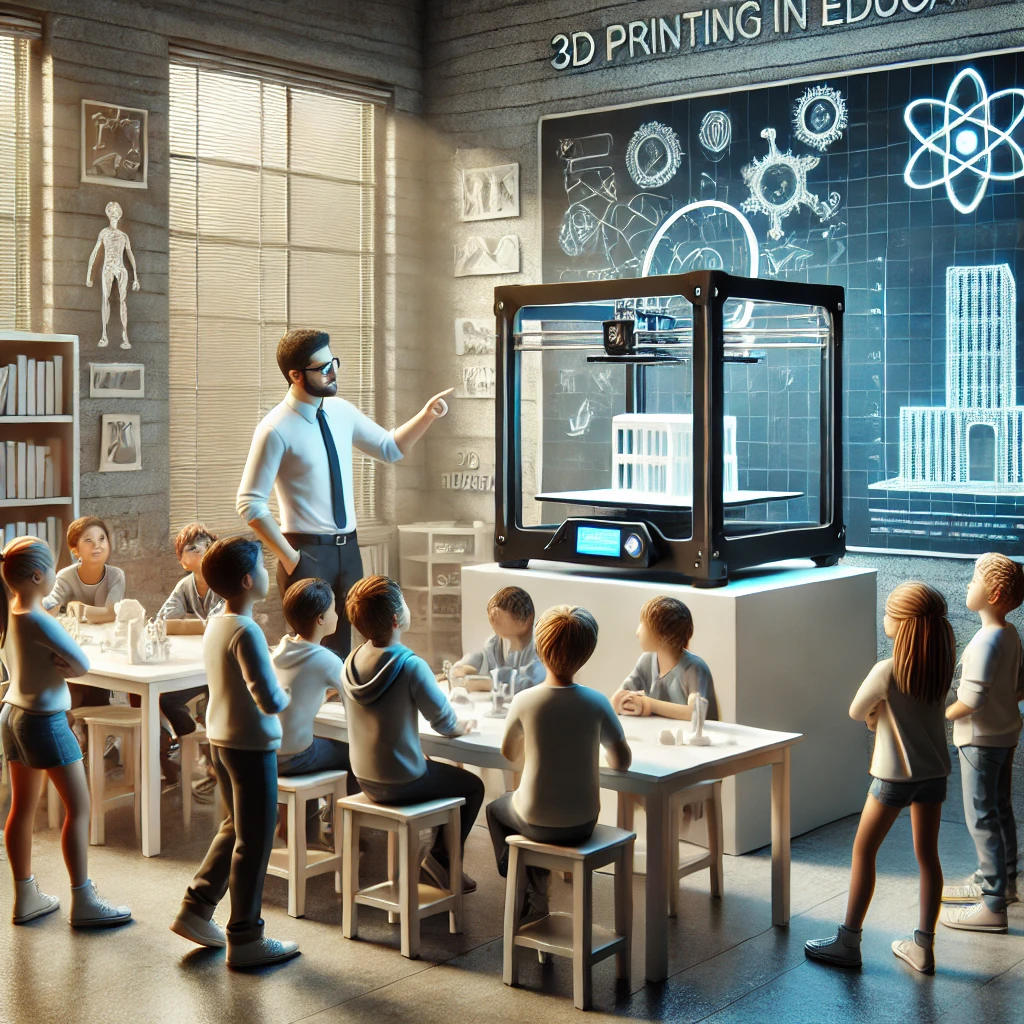How 3D Printing is Shaping the Future of Education

In the ever-evolving landscape of education, technology continues to play a pivotal role in transforming how students learn and interact with their environment. Among the most exciting advancements is 3D printing, a technology once confined to industrial use, which has now found its way into classrooms across the globe. This innovative tool is not just a new gadget for schools; it’s a powerful educational resource that enhances creativity, critical thinking, and hands-on learning.
As educators and institutions increasingly integrate 3D printing into their curricula, it’s clear that this technology is reshaping the future of education, offering students unique opportunities to bring their ideas to life and prepare for the challenges of tomorrow.
The Integration of 3D Printing in Education
3D printing, also known as additive manufacturing, involves creating three-dimensional objects layer by layer from a digital model. Initially, this technology was used primarily in industries such as aerospace, automotive, and healthcare. However, as 3D printers have become more affordable and user-friendly, educational institutions have recognized their potential as powerful teaching tools.
Schools and universities around the world are now incorporating 3D printing into their STEM (Science, Technology, Engineering, and Mathematics) programs. From elementary schools to higher education, students are being introduced to this technology as part of their regular coursework. The hands-on nature of 3D printing allows students to engage more deeply with the subject matter, fostering creativity and critical thinking.
Benefits of 3D Printing in the Classroom
1. Hands-On Learning: One of the most significant benefits of 3D printing in education is the ability to turn abstract concepts into tangible objects. Students can design and print physical models of complex mathematical shapes, historical artifacts, or biological structures, making learning more interactive and engaging.
2. Encourages Creativity and Innovation: 3D printing empowers students to bring their ideas to life. Whether it’s designing a new product, creating prototypes for engineering projects, or producing custom-made tools, students are encouraged to think creatively and explore new possibilities.
3. Enhances Problem-Solving Skills: The process of designing and printing 3D objects often involves troubleshooting and iteration. Students learn to identify problems, test solutions, and refine their designs, developing critical problem-solving skills that are essential in both academic and real-world settings.
4. Accessibility and Inclusivity: 3D printing can also be used to create educational aids for students with disabilities. For example, tactile learning tools for visually impaired students or customized assistive devices can be produced at a fraction of the cost of traditional methods.
5. Prepares Students for the Future:As 3D printing technology continues to advance, it is becoming increasingly relevant in various industries. By learning how to use 3D printers and CAD (Computer-Aided Design) software, students gain valuable skills that will be beneficial in their future careers, especially in fields like engineering, design, and manufacturing.
Current Applications of 3D Printing in Education
3D printing is already being used in various educational contexts, from primary schools to universities. Here are some examples of how it is currently applied:
STEM Education: In STEM programs, 3D printing is used to teach engineering principles, physics, and mathematics. Students can design and print models of structures, vehicles, and even robots, allowing them to test and analyze their designs in real-time.
Art and Design: Art and design students use 3D printing to create sculptures, jewelry, and other intricate designs. The technology allows for the production of complex shapes and patterns that would be difficult or impossible to achieve with traditional methods.
History and Archaeology: In history classes, students can create replicas of historical artifacts, providing a hands-on way to explore and understand the past. Similarly, archaeology students can use 3D printing to recreate fossils or ancient tools, aiding in their study and preservation.
Medical and Biological Sciences: In medical and biology courses, 3D printing is used to produce models of organs, bones, and other biological structures. These models can be used for study, surgical planning, and even practice surgeries, giving students a deeper understanding of human anatomy.
The Future of 3D Printing in Education
As 3D printing technology continues to evolve, its role in education is expected to grow even further. Here are some trends and predictions for the future:
Expanded Curriculum Integration: As 3D printing becomes more accessible, it will likely be integrated into a wider range of subjects beyond STEM, such as literature, social sciences, and even physical education.
Collaborative Learning: The collaborative nature of 3D printing projects fosters teamwork and communication skills. In the future, students from different disciplines may work together on complex projects, combining their knowledge to create innovative solutions.
Distance Learning and Online Education: With the rise of online education, 3D printing can play a role in remote learning environments. Virtual labs and remote 3D printing services could allow students to participate in hands-on learning experiences from anywhere in the world.
Advanced Manufacturing and Customization: As 3D printing technology advances, students will have access to more sophisticated tools and materials, enabling them to produce highly customized and complex objects. This will further enhance their ability to innovate and experiment with new ideas
3D printing is revolutionizing education by providing students with new ways to learn, create, and innovate. From enhancing hands-on learning experiences to preparing students for future careers, the impact of 3D printing in the classroom is profound and far-reaching. As this technology continues to advance, it will undoubtedly play an increasingly important role in shaping the future of education, offering endless possibilities for both teachers and students alike. By embracing 3D printing, educational institutions are not only enhancing the learning experience but also equipping students with the skills and knowledge they need to thrive in a rapidly changing world.



